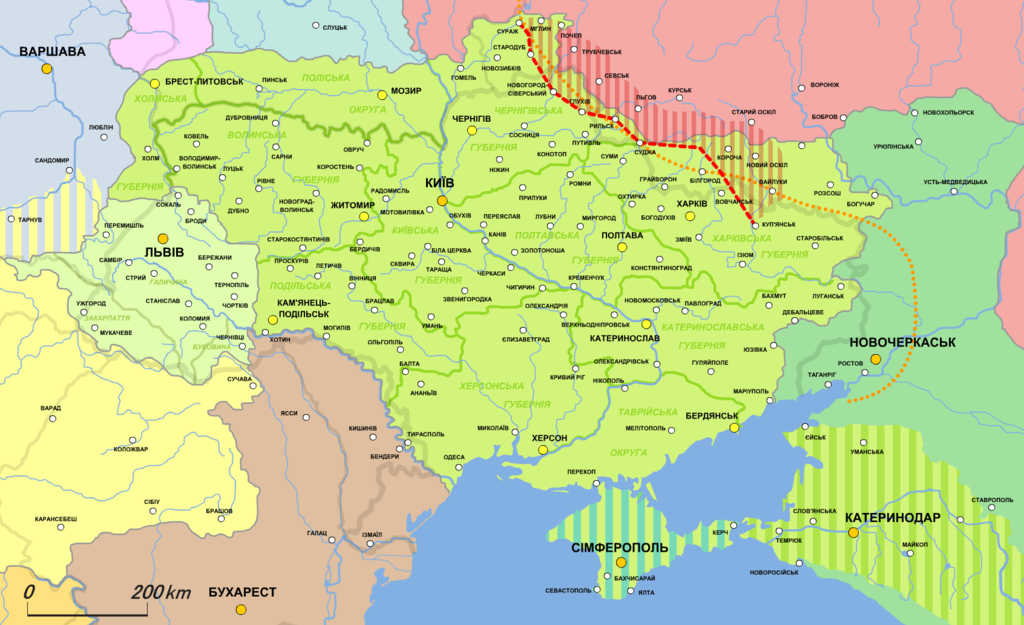
Beginning in the 19th century, there was migration from Ukraine to distant areas of the Russian Empire. According to the 1897 census, there were 223,000 ethnic Ukrainians in Siberia and 102,000 in Central Asia. An additional 1.6 million emigrated to the east in the ten years after the opening of the Trans-Siberian Railway in 1906. Far Eastern areas with an ethnic Ukrainian population became known as Green Ukraine.
Nationalist and socialist parties developed in the late 19th century. Austrian Galicia, under the relatively lenient rule of the Habsburgs, became the centre of the nationalist movement. Ukrainians entered World War I on the side of both the Central Powers, under Austria, and the Triple Entente, under Russia. 3.5 million Ukrainians fought with the Imperial Russian Army, while 250,000 fought for the Austro-Hungarian Army.
Austro-Hungarian authorities established the Ukrainian Legion to fight against the Russian Empire. This became the Ukrainian Galician Army that fought against the Bolsheviks and Poles in the post-World War I period (1919–23). Those suspected of Russophile sentiments in Austria were treated harshly.
World War I destroyed both empires. The Russian Revolution of 1917 led to the founding of the Soviet Union under the Bolsheviks, and subsequent civil war in Russia. A Ukrainian national movement for self-determination re-emerged, with heavy Communist and Socialist influence. Several Ukrainian states briefly emerged: the internationally recognized Ukrainian People’s Republic (UNR, the predecessor of modern Ukraine, was declared on 23 June 1917 proclaimed at first as a part of the Russian Republic; after the Bolshevik Revolution, the Ukrainian People’s Republic proclaimed its independence on 25 January 1918), the Hetmanate, the Directorate and the pro-Bolshevik Ukrainian Soviet Socialist Republic (or Soviet Ukraine) successively established territories in the former Russian Empire; while the West Ukrainian People’s Republic and the Hutsul Republic emerged briefly in the Ukrainian lands of former Austro-Hungarian territory.
When Ukraine Got Independence?
On 16 July 1990, the new parliament adopted the Declaration of State Sovereignty of Ukraine. This established the principles of the self-determination, democracy, independence, and the priority of Ukrainian law over Soviet law. A month earlier, a similar declaration was adopted by the parliament of the Russian SFSR. This started a period of confrontation with the central Soviet authorities. In August 1991, a faction among the Communist leaders of the Soviet Union attempted a coup to remove Mikhail Gorbachev and to restore the Communist party’s power. After it failed, on 24 August 1991 the Ukrainian parliament adopted the Act of Independence.[116]
A referendum and the first presidential elections took place on 1 December 1991. More than 90% of the electorate expressed their support for the Act of Independence, and they elected the chairman of the parliament, Leonid Kravchuk as the first President of Ukraine. At the meeting in Brest, Belarus on 8 December, followed by the Alma Ata meeting on 21 December, the leaders of Belarus, Russia, and Ukraine formally dissolved the Soviet Union and formed the Commonwealth of Independent States (CIS).
